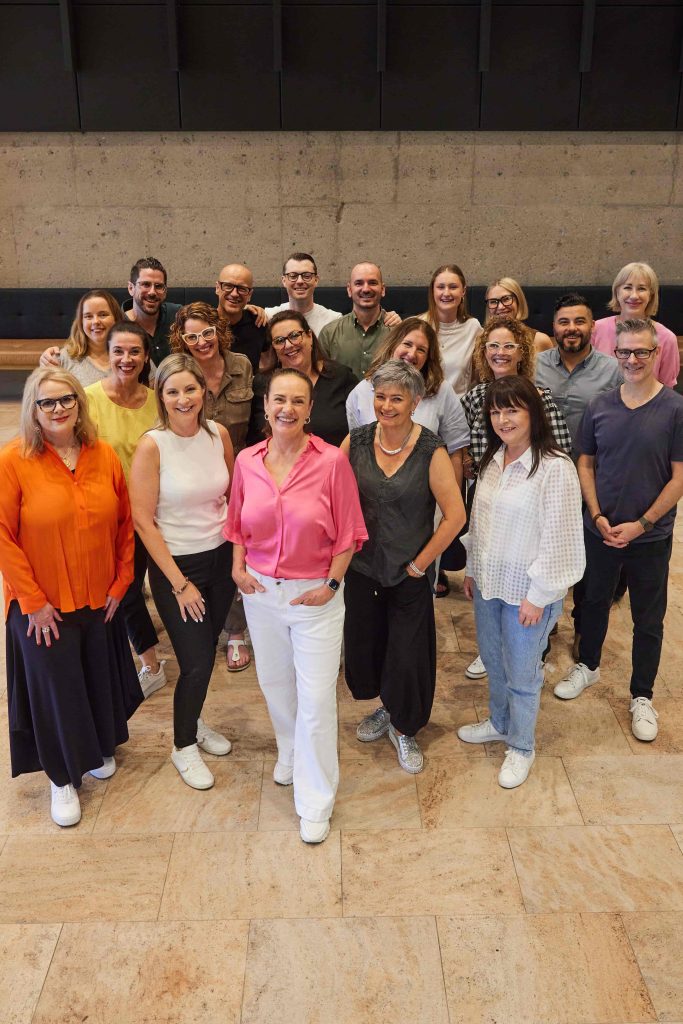Most readers will be familiar with the Jerry Seinfeld joke about how speaking in front of a crowd is people’s number one fear and death is number two, meaning we’d rather be in the casket than giving a eulogy at a funeral. While the joke is amusing, there is also some truth to it – many of us genuinely loathe public speaking, but our jobs require it.
So, how do you get better at it?
I started presenting in my early teenage years, which was, unfortunately, a long time ago now! This has given me decades to refine my craft. So, when seeking to improve your presentation skills, it’s critical to start with the mindset that there is no quick fix.
A great presentation skills workshop (like Phuel’s!) will give you the foundations and help you start your journey, but it needs ongoing commitment and practice.
Aim for progress, not perfection
If you go into the journey hoping to emerge from a course or even a period of sustained practice as a great orator who can rouse audiences, you will likely be disappointed. Start small and focus on the one or two things you find most challenging, as these are likely your biggest roadblocks.
These will be different for everyone, but some common examples are managing nerves, better body language or speaking at a more even, regulated pace.
You can refine other areas once you’ve progressed on your biggest roadblock. By addressing this one thing, you may well find you aren’t quite so terrified the next time someone asks you to present.
Embrace every opportunity to practice
One piece of advice that has been invaluable in my journey is to seize every speaking opportunity, no matter how small or informal. These moments are surprisingly effective in honing your skills. For instance, volunteering to present findings in a meeting or offering to lead a community event can provide practical experience that is as valuable as any training workshop.
During my time with people from broad walks of life – from improv actors to business professionals – I’ve observed a consistent pattern: those who regularly put themselves in presentation settings tend to make more significant strides in their abilities. It’s the real-world application of skills that cements learning and builds confidence.
Actively seek others’ feedback
Feedback is another crucial element in the journey to better, more confident presentations. We all have a recording device in our bags or pockets today, so it’s quite easy to record yourself practising (or in live scenarios) and review it yourself.
This can be helpful, but it’s also worth remembering that most of us are our own worst critics. So, nominate someone or a few people to give you feedback. Make sure you both trust and respect their opinion and know they’ll be honest with you.
Celebrate incremental achievements
Tying into the opening point, when you see progress, recognise and celebrate it! Keep recordings, and go back a few months later to see what’s changed. Change is usually incremental, so if you’re waiting for that big transformation moment to celebrate, you may never feel like you’ve achieved it.
In summary, there is no shortcut to becoming a better presenter. But it is a journey that is worth it for your confidence and career opportunities.
The journey doesn’t have an endpoint; it’s a continuous path of growth, learning and adaptation. Whether you are just starting or looking to refine advanced skills, the key is consistency and a proactive attitude towards seizing opportunities.
Phuel is committed to supporting this journey, providing the tools, techniques and platforms for anyone eager to enhance their presentation skills. So take that step, embrace the journey and watch as your skills – and your confidence – soar to new heights.





